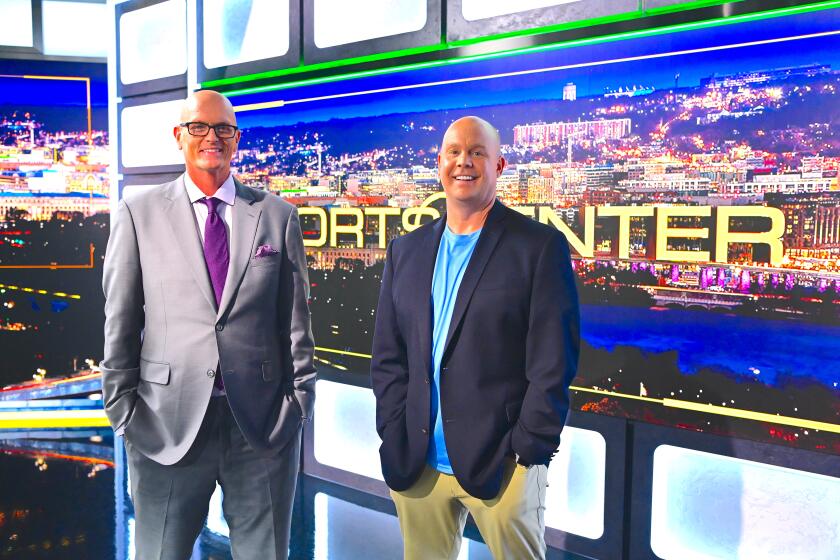‘Museum Companion to Los Angeles’ covers wide, and weird, ground
That the world regards Los Angeles as a very quirky place is a given.
But when the world starts thumbing through the recently published third edition of “Museum Companion to Los Angeles,” Borislav Stanic’s exhaustive guide to every collection of art, artifacts and vehicles, every historic site, aquarium, botanical garden and zoo he’s been able to uncover in Los Angeles County, the world may well conclude that it didn’t know the half of it.
The guide covers 263 sites, which Stanic says is more than any other city in the world; he says New York has about 230.
That L.A. is a mega-county, and not a mere city, perhaps makes the comparison a bit oranges to apples, but of course that’s just part of its hard-to-get-a-grasp-on quality.
The 287-page book covers all the mainline attractions, with descriptions, photos, visitor information and, sometimes, floor plans.
But browsers won’t be hard-pressed to find some brow-raisers.
Anyone up for a trip to the Bunny Museum? It occupies a private home in Pasadena that’s crowded with more than 25,000 objects in the form or image of the cute critters — among them cookie jars, a pinball machine and a toilet seat.
Maybe you’d like to get a whiff of the Annette Green Perfume Museum, billed as “the only museum of its kind in the United States.” It’s housed at the downtown Fashion Institute of Design and Merchandising’s FIDM Museum and Galleries.
The Mini Cake Museum at the Hollenback Palms retirement center in Boyle Heights — “America’s first cake museum” — harbors about 150 testimonials to the art of cake decoration. The shapes are Styrofoam, but the icing is real.
If perusing the sweet and cuddly side of life isn’t your thing and you’d rather survey artifacts of war and strife, the Martial Arts History Museum in North Hollywood, identified as the world’s first, will take you from ancient China and the samurai period of Japan to Bruce Lee. The American Military Museum in South El Monte has seven acres with more than 400 pieces of ordnance from the 1930s on, including tanks, personnel carriers and cannons. The Wende Museum in Culver City documents the Cold War era with toys, propaganda and artworks, including exhibits on everyday life in the Soviet bloc. Its collections and archives total more than 100,000 items, said to be the world’s largest on the subject.
L.A. is the home of noir, and it gets no darker than the Museum of Death in Hollywood. “This macabre collection is not for the faint of heart,” begins the entry in the “Museum Companion,” and we’d rather not go into the gory details. The book notes that “to make sure guests know what they are in for, the management has an enlarged test photo of a horrific accident prominently displayed at the entrance and keeps smelling salts handy.”
Along somewhat similar lines is Psychiatry: An Industry of Death Museum, also in Hollywood. It’s an advocacy-minded display, sponsored by the Church of Scientology, that aims to debunk the science behind psychiatry and chronicle harm done in the name of mental health treatment and experiments. Exhibits include implements of torture, straitjackets and other restraints, and a gallery linking the 19th century doctrine of eugenics to the Holocaust.
Let’s talk cars, instead. “Museum Companion” lists five sites devoted exclusively to the automobile — a sixth, the new Gardena facility that houses the county natural history museum’s vintage auto collection, opened in October, after the book’s deadline. The quirkiest is the Metropolitan Pit Stop Museum in North Hollywood, devoted solely to the Nash Metropolitan, a fuel-efficient compact produced from 1954 to 1962.
As for Stanic, 57, he’s an art-lover who came to L.A. from Belgrade, Yugoslavia (now Serbia), on a visit 20 years ago and decided to stay.
In Europe, he’d been an author and publisher of art books; hoping to find an L.A. museum guide for his own use, he discovered that none existed and decided to fill the gap. The first two editions emerged in 1996 and 1998 and sold a combined 20,000 copies; the new one, 13 years later, includes more than 30 museums that he says have opened in the interim. Stanic says art museums are his primary love — and his book attests that L.A. has 36.
He says he has been to every site in the book. After all the uncanny things he’s encountered along the way, what really puzzles him is why two sellers on Amazon.com are asking $145 and $250, respectively, for first-edition copies of the “Museum Companion.”
“That’s strange. It’s odd,” Stanic says. “It wasn’t even hardcover.”
More to Read
The biggest entertainment stories
Get our big stories about Hollywood, film, television, music, arts, culture and more right in your inbox as soon as they publish.
You may occasionally receive promotional content from the Los Angeles Times.











